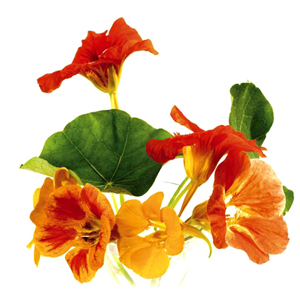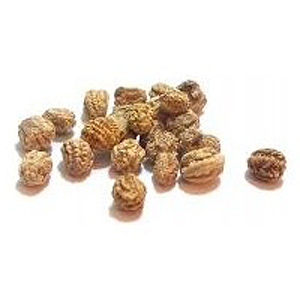No products
Garden nasturtium seed - 50g
(Fructus Tropaeoli majus)
Garden nasturtium (Tropaeolum majus) is a potent natural antibiotic active against all of 46 strains of Staphylococcus aureus pyogenes, causative agents of inflammatory diseases of the urinary tract and kidney and in fighting with hardly treatable Staphylococcus aureus...
![]()
Content |   |
Binomial nameTropaeolum majus Commonly called (often known as)Indian cress or Monks cress StorageStore in a dry place at a temperature up to 25°C |
Description of herb
Garden nasturtium (Tropaeolum majus) - an annual herb, 15 to 40 cm high, with a recumbent, creeping, branched stem reaching a length of up to 5 m comes from areas in Ecuador, Colombia and Peru.
It blooms from June to October and the fruit is a three-capsule capsule with seeds.
The undeniable advantage of this plant is that both the leaf and the flower and the fruit (seed) are edible in the fresh state. The seeds can be eaten fresh from the plant in the fresh state, if it seems too hot, we can add them to salads or sliced, for example, in spreads, or on bread and butter. The seeds can also be pickled in vinegar and used instead of capers.
If this ornamental plant inhabits your garden, do not hesitate to taste it - for bread and butter, it is a refreshing medicinal delicacy. If you don't have it in the garden, definitely include it in your menu anyway.
Healing effects
Garden nasturtium (Tropaeolum majus) is a potent natural antibiotic against all 46 strains of Staphylococcus pyogenes aureus, which are common causes of inflammatory diseases of the urinary tract and kidneys. Some healers and physicians have noted the success of the use of Lichořeřišnica in the fight against hard-to-cure golden staphylococcus, which often resists other strong antibiotics and endangers the health of those infected for many years. However, this herb not only destroys staphylococci, but also acts against salmonella or streptococci, for example. Its use can in many cases save us synthetic antibiotics, or significantly support and shorten the treatment of the disease.
It is suitable for use in the above-mentioned inflammation of the urinary tract, kidneys and airway inflammation. By using it early, we can eliminate or reduce the infectious infection at the very beginning. It also acts as a prevention and is great for treating past inflammations with the threat of recurrence.
In the past, it was often used against hair loss and dandruff, today it can be found as part of natural remedies against these problems.
It has a disinfecting effect when applied to injured skin, where it destroys any microorganisms that could lead to inflammation.
Active substances
Seeds (Fructus Tropaeoli) contain
- benzyl isothyocyanate
- essential oils
- potassium
- oil
- proteins
Properties
Antibiotic, anti-inflammatory, antiseptic.
Recommended at
- salmonella
- against all 46 strains of Staphylococcus aureus (Golden Staphylococcus)
- against streptococci
- inflammation of the urinary tract
- kidney
- airway inflammation
- against hair loss
- against dandruff
Preparation and dosing
We use it in the form of tea or tincture
TEA
Preparation: Pour 1 teaspoon of dried seeds into a cup of hot water, let it infuse for about 10 minutes, strain.
Dosing: In case of problems, we use it 3 times a day or once a day as a prevention.
TINCTURE
Preparation: Pour 130-150 g of seeds over 1 liter of 50% alcohol and let it infuse for 3 weeks, shake daily, then strain-press.
Dosing: 15 drops 3 times a day.
Side effects
There are no known side effects or adverse reactions.
REMEMBER: Tell all your health care providers about any complementary health practices you use. Give them a full picture of what you do to manage your health. This will help ensure coordinated and safe care.

